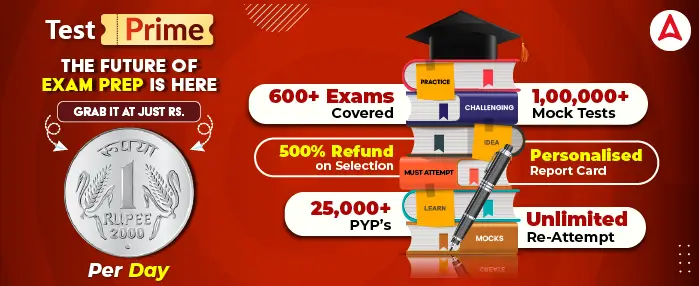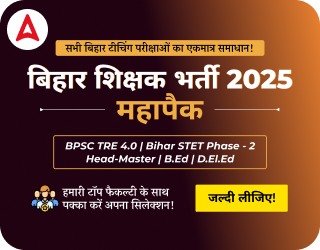Table of Contents
The Indian government is set to introduce the Higher Education Commission of India (HECI) Bill 2025 during the Winter Session of Parliament beginning on December 1. The draft legislation aims to establish a single regulatory authority for higher education by bringing together the functions of three existing bodies i.e. the University Grants Commission (UGC), the All India Council for Technical Education (AICTE), and the National Council for Teacher Education (NCTE). All the major reforms, aspects, and key details regarding the bill are mentioned below.
Latest Update on HECI
As per the news reports, here are five latest updates on the Higher Education Commission of India Bill 2025 (HECI) based on recent news:
- The HECI Bill 2025 is listed for introduction in the upcoming Winter Session of Parliament, which begins on December 1 and runs until December 19.
- The Bill proposes to merge the roles of the University Grants Commission (UGC), All India Council for Technical Education (AICTE), and National Council for Teacher Education (NCTE) into a single regulatory body.
- The Bill outlines three core functions for HECI: regulation, accreditation, and setting professional/academic standards.
- The Bill will not bring medical and legal education institutions under HECI’s purview, which remain outside its regulatory scope
- The reform is being pushed to align with the National Education Policy 2020, which recommended a unified regulatory architecture for higher education, and the government has been working on the draft since 2018
Full Form of HECI
The Higher Education Commission of India (HECI) is the proposed single regulatory authority intended to oversee and reform the higher education system in India. Introduced through the HECI Bill 2025, the term “HECI” represents a modern regulatory framework aimed at replacing multiple existing bodies with one coordinated and efficient structure. The full form highlights its core purpose — to act as a central commission responsible for improving quality, standards, and governance across higher education institutions.
HECI Bill 2025: Overview
HECI Bill 2025 comes up with a major purpose, policy, and some key reforms. Here’s the quick overview of HECI Bill 2025.
| HECI Bill 2025 | |
| Full Form of HECI | Higher Education Commission of India |
| What is HECI? | A proposed single regulator for higher education under the HECI Bill 2025. |
| Purpose | To simplify and unify India’s higher education regulatory system. |
| Bodies It Replaces | UGC, AICTE, and NCTE (their regulatory roles). |
| Basis in Policy | Recommended by the National Education Policy (NEP) 2020. |
| Key Functions | Regulation, standard-setting, accreditation oversight, and ensuring academic quality. |
| Funding Role | Expected to remain with the Ministry of Education, not fully with HECI. |
| Expected Impact | Reduced overlapping regulations and improved governance efficiency. |
| Why This Reform Now | To modernise the system, remove duplication, and create a more transparent regulatory structure. |
HECI In NEP 2020
The National Education Policy (NEP) 2020 proposed the creation of a single, powerful regulator called the Higher Education Commission of India (HECI). The aim was to replace multiple existing bodies and bring all higher-education regulation under one coordinated framework.
- One umbrella body to regulate all higher education (except medical and legal education).
- HECI would replace bodies like UGC, AICTE, and NCTE and perform their functions in a unified structure.
- It will ensure standards, funding, accreditation, and regulation are streamlined.
- Promotes transparency, reduced overlap, and more autonomy for institutions.
- Helps create a simpler, student-centric, and efficient higher education governance system.
How HECI Will Replace UGC
- HECI will take over all regulatory functions of UGC: It will handle university approvals, recognition, monitoring, and rule-making that UGC currently performs.
- Academic standards set by UGC will be shifted to HECI: HECI will frame curriculum frameworks, credit systems, and learning outcome standards at the national level.
- HECI’s accreditation vertical will replace UGC’s quality monitoring role: Instead of UGC inspections, accreditation under HECI will decide autonomy, quality status, and performance levels of institutions.
- Funding responsibilities will move to HECI’s grants vertical: UGC’s power to distribute grants and financial support will be absorbed into a more transparent, structured funding system.
- UGC as a separate body will cease to exist: All its powers, guidelines, and regulatory authority will merge under one single organisation—HECI—for a unified governance system.
How does the HECI Bill Reform the System?
Below are the major ways this Bill will reform the system:
- Single Regulator for All: HECI will replace UGC, AICTE, and NCTE, creating one unified authority that simplifies approvals and eliminates overlapping rules.
- Stronger Quality & Accreditation: A dedicated accreditation system will focus on outcomes like learning, research, and performance, ensuring better-quality institutions.
- More Autonomy for Institutions: Colleges and universities will get greater freedom to design courses, start new programs, and collaborate globally, encouraging innovation.
- Faster & Transparent Processes: A single-window system will reduce paperwork and make regulations, approvals, and funding decisions quicker and more transparent.
- Uniform Academic Standards: HECI will set national standards for curriculum, credits, and learning outcomes, giving students equal-quality education across India.




 KVS Exam Centers List 2025 for TGT PGT P...
KVS Exam Centers List 2025 for TGT PGT P...
 Chandigarh SSA TGT Question Paper 2025 ,...
Chandigarh SSA TGT Question Paper 2025 ,...
 CSIR NET City Intimation Slip 2025, Chec...
CSIR NET City Intimation Slip 2025, Chec...












